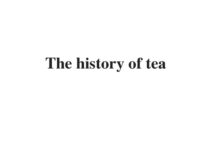Table of Contents
Passage
Humankind’s nearest relative is even doser than we thought: chimpanzees display remarkable behaviours that can only be described as social customs passed on from generation to generation.
A. Researchers have studied the similarities between chimpanzees and humans for years, but in the past decade they have determined that these resemblances run much deeper than anyone first thought. For instance, the nut cracking observed in the Tai Forest is far from a simple chimpanzee behaviour; rather it is a singular adaptation found only in that particular part of Africa and a trait that biologists consider to be an expression of chimpanzee culture. Scientists frequently use the term “culture” to describe elementary animal behaviours, but as it turns out, the rich and varied cultural traditions found among chimpanzees are second in complexity only to human traditions.
B. During the past two years, an unprecedented scientific collaboration, involving every major research group studying chimpanzees, has documented a multitude of distinct cultural patterns extending across Africa, in actions ranging from the animals’ use of tools to their forms of communications and social customs. This emerging picture of chimpanzees not only affects how we think of these amazing creatures but also alters human beings’ conception of our own uniqueness and hints at ancient foundations for extraordinary capacity for culture.
C. Homo sapiens and Pan troglodytes have coexisted for hundreds of millennia and share more than 98 percent of their genetic material, yet only 40 years ago we still knew next to nothing about chimpanzee behaviour in the wild. That began to change in the 1960s, when Toshisada Nishida of Kyoto University in Japan and Jane Goodall began their studies of wild chimpanzees at two field sites in Tanzania. Goodall’s research station at Gombe—the first of its kind—is more famous.
D. In these initial studies, as the chimpanzees became accustomed to close observation, the remarkable discoveries began. Researchers witnessed a range of unexpected behaviours, including fashioning and using tools, hunting, meat eating, food sharing and lethal fights between members of neighbouring communities. In the years that followed, other primatologists set up camp elsewhere, and, despite all the financial, political and logistical problems that can beset African fieldwork, several of these out-posts became truly long-term projects. As a result, we live in an unprecedented time, when an intimate and comprehensive scientific record of chimpanzees’ lives at last exists not just for one but for several communities spread across Africa.
E. As early as 1973, Goodall recorded 13 forms of tool use as well as eight social activities that appeared to differ between the Gombe chimpanzees and chimpanzee populations elsewhere. She ventured that some variations had what she termed a cultural origin. But what exactly did Goodall mean by “culture”? The diversity of human cultures extends from technological variations to marriage rituals, from culinary habits to myths and legends. Animals do not have myths and legends, of course. But they do have the capacity to pass on behavioural traits from generation to generation, not through their genes but by learning. For biologists, this is the fundamental criterion for a cultural trait: it must be something that can be learned by observing the established skills of others and thus passed on to future generations.
F. What of the implications for chimpanzees themselves? We must highlight the tragic loss of chimpanzees, whose populations are being decimated just when we are at last coming to appreciate these astonishing animals more completely. The bushmeat trade is particularly alarming: logging has driven roadways into the forests that are now used to ship wild-animal meat— including chimpanzee meat—to consumers as far afield as Europe. Such destruction threatens not only the animals themselves but also a host of fascinatingly different ape cultures.
G. Perhaps the cultural richness of the ape may yet help in its salvation, however. Some conservation efforts have already altered the attitudes of some local people. A few organizations have begun to show videotapes illustrating the cognitive prowess of chimpanzees. One Zairian viewer was heard to exclaim, “Ah, this ape is so like me, I can no longer eat him.”
H. How an international team of chimpanzee experts conduct the most comprehensive survey of the animals ever attempted? Scientists have been investigating chimpanzee culture for several decades, but too often their studies have contained a crucial flaw. Most attempts to document cultural diversity among chimpanzees have relied solely on officially published accounts of the behaviours recorded at each research site. But this approach probably overlooks a good deal of cultural variation for three reasons.
I. Firstly, scientists typically don’t publish an extensive list of all the activities they do not see at a particular location. Yet this is exactly what we need to know—which behaviours were and were not observed at each site. Second, many reports describe chimpanzee behaviours without saying how common they are; without this information, we can’t determine whether a particular action was a once-in-a-lifetime aberration or a routine event that should be considered part of the animals’ culture. Finally, researchers’ descriptions of potentially significant chimpanzee behaviour frequently lack sufficient detail, making it difficult for scientists working at other spots to record the presence or absence of the activities.
J. To remedy these problems, the two of us decided to take a new approach. We asked field researchers at each site for a list of all the behaviours they suspected were local traditions. With this information in hand, we pulled together a comprehensive list of 65 candidates for cultural behaviours.
K. Then we distributed our list to the team leaders at each site. In consultation with their colleagues, they classified each behaviour in terms of its occurrence or absence in the chimpanzee community studied. The key categories were customary behaviour, habitual, present, absent, and unknown. We should note, however, that certain cultural traits are no doubt passed on by a combination of imitation and simpler kinds of social learning. Either way, learning from elders is crucial to growing up as a competent wild chimpanzee.
Questions
Questions 14 – 18
Reading Passage has eleven paragraphs A-K.
Which paragraph contains the following information?
Write the correct letter A-K, in boxes 14—18 on your answer sheet.
14 A problem of research on chimpanzee culture which is only based on official sources
15 A new system designed by two scientists aiming to solve the problem
16 Reasons why previous research on ape culture is inadequate
17 Classification of data observed or collected
18 An example showing cognitive powers of animals leading to indication of change in local people’s attitude toward preservation
Questions 19-22
Do the following statements agree with the information given in Reading Passage?
In boxes 19-22 on your answer sheet, write
| TRUE FALSE NOT GIVEN | if the statement agrees with the information if the statement contradicts the information if there is no information on this |
19 Research found that chimpanzees will possess the same complex culture as humans.
20 Human and apes ancestors lived together long ago and share most of their genetic substance.
21 Jane Goodall has observed many surprising features of complex behaviours among chimpanzees.
22 Chimpanzees, like humans, derive cultural behaviours mostly from genetic inheritance.
Questions 23 – 26
Answer the questions below.
Choose NO MORE THAN THREE WORDS AND / OR A NUMBER from passage for each answer.
Write your answers in boxes 23-26 on your answer sheet.
23 When did the unexpected discoveries of chimpanzee behaviour start?
24 Which country is the research site of Toshisada Nishida and Jane Goodall?
25 What did the chimpanzees have to get used to in the initial study?
26 What term did Jane Goodall use in 1973 to explain groups of chimpanzees using tools differently?
Answers

Online Practice Test: https://online.ieltsquangbinh.com/the-culture-of-chimpanzees


